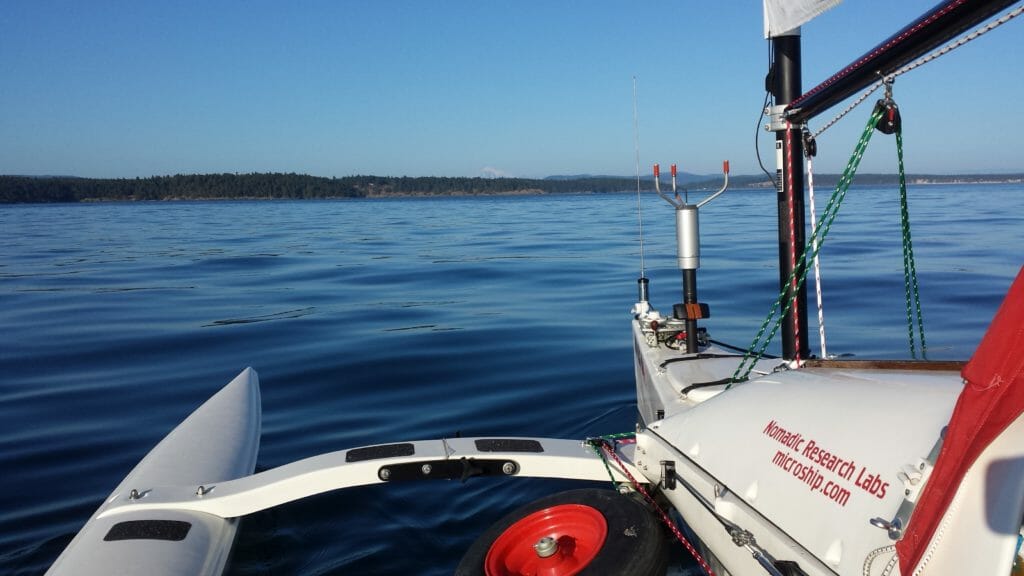
Microship Seeks Geeky Skipper
by Steven K. Roberts
Nomadic Research Labs
updated February, 2023
Latest news (2/21/23) – the Microship has found her new skipper, and will be going through a series of development tests in Seattle before launching on the upper Missouri River in Montana. I’m leaving the narrative below for historical context. This photo shows her in the ferry waiting lanes, about to escape San Juan Island.
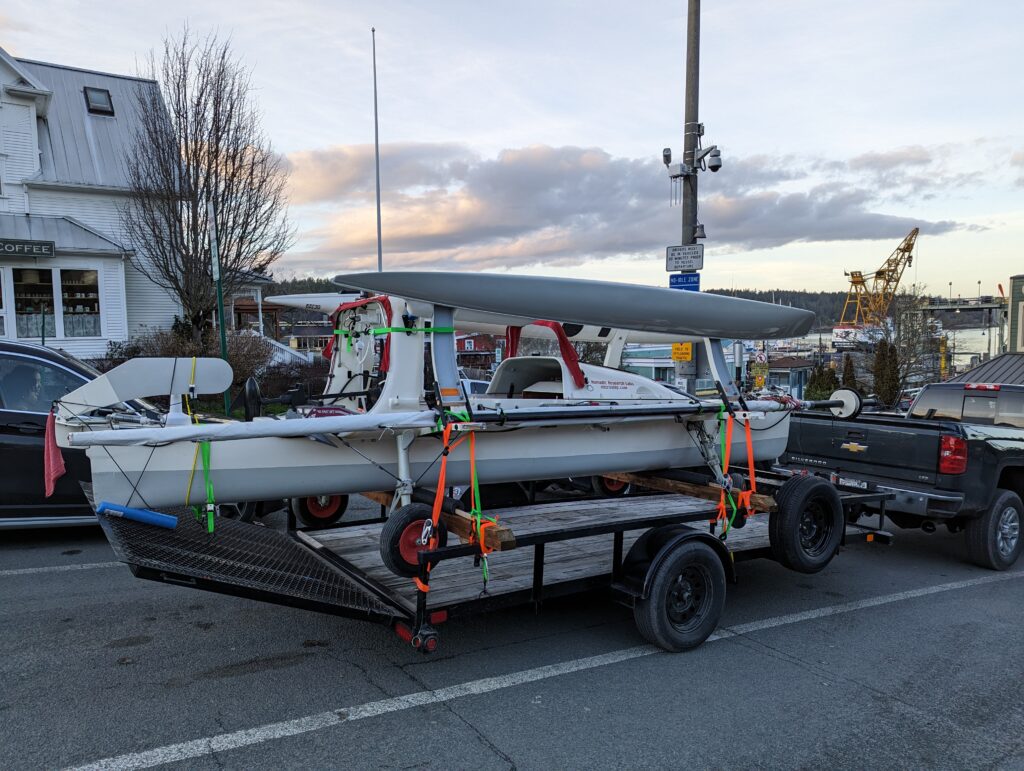
A decade of my life (1993-2002) was focused on the development of this gizmologically intense amphibian pedal/solar/sail micro-trimaran, but as the project neared its end, my own nautical desires were shifting. She sat in my lab for a few years, nearly forgotten… then had a swan song in 2013 with dozens of day-sails in the waters around my new home on San Juan Island. By then I was living aboard an Amazon 44 named Nomadness, with dreams of open-ended global voyaging.
More years passed. Mostly because of chronic pain issues, but also on the quest for the space aboard to build a proper starship with room to work, I moved to the Dark Side in the form of a Delta 50 named Datawake. Still the Microship sits… gathering dust in my lab, waiting for her next adventure.
For a while, I was sure I would be launching this from the upper deck of the mothership; I have a crane, and there is enough room (with a bit of fiberglass surgery). But it would be too complex… and I know from experience that I would rarely use it. This exquisitely engineered boatlet would become a sculpture on top of a big power boat, incongruous, offering windage and habitat instead of the gonzo technomadic adventure for which she was designed.
So. As I get older and find myself increasingly unlikely to take off on the epic voyage of coastal and inland waterways that inspired the decade of development, I have come to realize that she needs a new home.
There are a few links below about the design and systems, including a narrative of physical fabrication that shows the details of physical structure. We had the benefit of world-class consultation on this project, including naval architects, composites gurus, Boeing contractors, human-powered-vehicle experts, power system engineers, and lots of brilliant volunteers. About 160 corporate sponsors offered the best equipment available, and we built a 3,000 square-foot lab on Camano Island for the project… after 2 embryonic years in the engineering building at UCSD and another 2 years of intensive development in a Silicon Valley facility donated by Apple Computer. In other words, this was a serious undertaking with incalculable monetary value, driven by technopassion and heavily supported by industry.
So what is this unusual boat? The Microship was built for a 14,000-mile trip down the Missouri and around the Great Loop, with initial shakedowns in the Pacific Northwest from Olympia to Port Hardy. She has three modes of propulsion (pedal, solar, and sail), and includes deployable landing gear to allow haulout and basic portage without needing a truck and trailer. It is possible to sleep aboard, though it is spartan… you disconnect the pedals and retract the seat, then unroll a camping mattress and sleeping bag (I called this “on-water bivouac”). The structure was designed to integrate an electronics console with excellent serviceability… that cowling opens fully for access… and all mechanical controls of rudder and landing gear are hydraulic.
In other words, this is a very geeky boat. It includes 480 watts of solar panels bonded to vacuum-bagged folding panels that fill the spaces between the hulls, along with an 8-channel peak-power tracker system with thruster control. The sail is a 93 square-foot roller furling, vertically battened rig… with the mast rotating in its step under control of a furling drum. The pedal drive is a Spinfin, custom made for this boat, with 10x ratio between the crankset input and 13-inch prop… allowing easy cruise in the 3-4 knot range with faster sprints.
A few things still need to be completed or improved… I would estimate 2-3 months of shop time before embarking on an open-ended adventure. This would include integration of modern comm/nav electronics in addition to whatever tools are needed for the application, fixturing of the outer edges of the solar array, simplification of transition into and out of on-water bivouac mode, addition of tramps if the solar array is not used, fine-tuning the rudder control hydraulics (or replacement with cable control), completion of the fabric dodger and side windows, and a few other things. Small stuff compared to what’s already done, but there is work involved before she is ready for full-time… although a project involving data-collection day trips, ROV launches, or other more casual application would shorten the list considerably.
Who is this for?
The Microship was designed for a high-tech expedition in the spirit of my earlier bicycle adventures, and I like to imagine that somewhere out there is a next-generation technomad who is my spiritual descendent of sorts… certainly with a more current vision, given how far technology has come, but with the same gonzo obsession and eagerness to do something brilliant in the public eye. This boat attracts attention; the media loves it, and you never have a problem finding someone to catch lines. One of the hardest parts is escaping the crowd at the dock, taking photos and asking questions. This is a micro-yacht with fine detailing, and carries lots of things nobody has ever seen around a marina.
One possible mission for the boat is related to what I was doing, but with vastly more powerful tools. Imagine a jaunt down a river, streaming environmental telemetry and live commentary, along with underwater video from a Trident ROV and aerial imagery from a folding Mavic drone. This would be beautiful, with a broadband cellular pipe that scales back gracefully to ham radio when out of range. Visitors to your site could interact with a virtual Microship console, showing live instruments (via an N2K gateway) with graphic history served from a database that logs all the streams. This is what I was intending to do (although back then, high-bandwidth aerial and underwater video was a pipe dream).
Doing something publicly geeky like this attracts media and sponsorship, and becomes self-supporting if you have a clearly articulated mission and the kind of personality that keeps the buzz going. And the Microship fits right in… she’s not just some random boat, but a purpose-built miniature research vessel. Of course, not everyone wants to be this public, but part of the value here is that the boatlet already has a deep history of media coverage and development narrative, and I would love to see a new project leverage that. See my Reaching Escape Velocity book for more on this…
The Price
It is impossible to pin an absolute price tag on this. This would be a poor choice if you are looking for a beach tri… Hobie makes some wonderful machines for that, with a lot fewer moving parts (I have a Tandem Island for my upper deck, and have been having a ball with local jaunts around Friday Harbor). It is also a one-person craft… and is not for ocean-crossings.
I can sort of imagine it being used for a short intense adventure, like the Race to Alaska or the Everglades Challenge. Of course, that sounds hard: there are lots of faster multihulls out there… and it would be uncomfortable… and then it would be over. Most of the engineering in this machine would be irrelevant for that kind application anyway. Still, this is a high-visibility boat that moves well, and she could become an annual fixture as a solo high-tech pedal/sail micro-tri.
So here’s the deal: I’m willing to listen to proposals. A huge part of my life is tied up in this project, and I will inevitably be part of whatever comes next… even if not hands-on. If an idea excites me, and includes the sort of passion that launched this endeavor, then the price will be around $24K with all the trimmings (including solar array, related hardware, and a fair bit of hand-holding as you gradually make it your own).
The price will be low if I can be convinced that her new skipper will take her places where I would have loved to go, with me participating directly in the next generation (shared publishing project or other spin-offs). I can imagine a scenario based here in Friday Harbor, with Datawake tethered to Microship for mini-expeditions that probe the space around us via ROV and sensors, generating virtual tours including something playable in the Oculus Rift and other VR spaces. Hmmmmm….
The price will be higher if she is to be more of a showpiece, though depending on what that means, there is a lot of wiggle room. My bicycle is in a museum, and although this doesn’t have the kind of history of her technomadic predecessor, it is not hard to imagine corporate lobby art, advertising, or a high-tech beach tri only deployed on rare occasions.
So there is no specific price tag. But she is available. Does this excite your nautical technopassions? Do you have years to put into an expedition, a project involving education and telemetry, an audacious but realistic cruise, or a vision I have yet to even imagine? Got an idea that would help amortize the massive investment of time and years that has gone into this? Talk to me. (The contact form is up in the menu). Please bear in mind that I need to see a way for it to really work, which means a history of successful projects, a mediagenic nature, enough boating experience for this to make sense, clear communication skills, a good rapport between us, a realistic adventure plan, and enough technical knowledge to make such an undertaking likely to succeed.
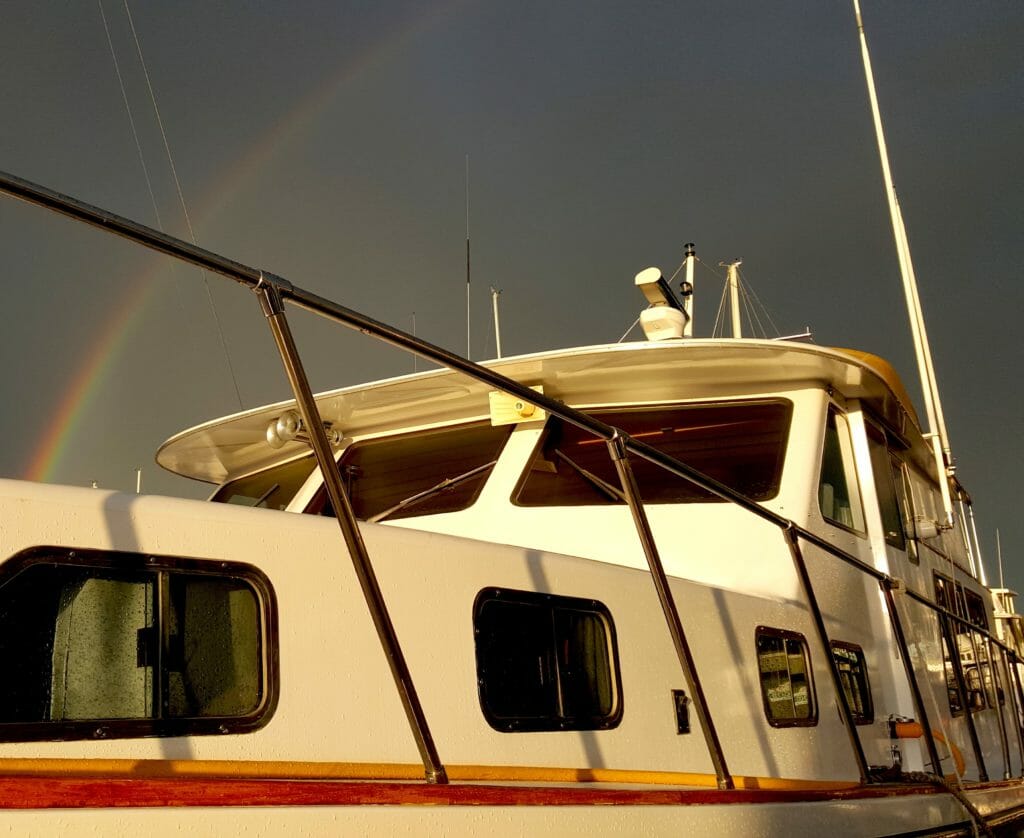
Microship Information
Here are some articles on this site that will give much more detailed information…
Conjuring the Microship Design — Mapping the elaborate expedition fantasies onto an actual specification was itself a huge process, and required grappling with all sorts of conflicting realities. This article describes that process from a 2002 perspective.
The entire 10-year History of the Microship Project — Getting to this point was a long and convoluted path that included multiple substrates, relationships, labs, and system architectures. This is the narrative, with lots of photos.
Building the Microship Trimaran — This is a look at the fabrication of the boat itself… leaving out electronics, landing gear, hydraulics, pedal drive, thruster, solar array, sail rig, and other complications.
Microship Electronics Photo Essay — Even though much of the electronics developed for the ship is now obsolete (and unnecessary to future expeditions), this gives an excellent look at some of the engineering that went into the project. Today’s tools are so much smaller that the comm/nav and telemetry side of things will be easy and cheap.
Microship Hydraulics — Landing-gear control, ship steering, and rudder deployment all depend on a hydraulic system that allows linear push-pull movement to be routed through cabling harnesses. This piece gives a look at that system.
Microship Revival — In 2013, after a decade of lying idle in the lab, I splashed the boat and kept her for a few months in the Port of Friday Harbor… leading to lots of short adventures. This is the tale of that launch.
In addition to those stories, the archives of this site have lots of media coverage and a few of the 144 Microship Status Reports that were published during the decade of development. If you have any specific questions, please don’t hesitate to ask… and if this is triggering a powerful itch to take a geeky boatlet on a grand expedition, I definitely want to hear from you!


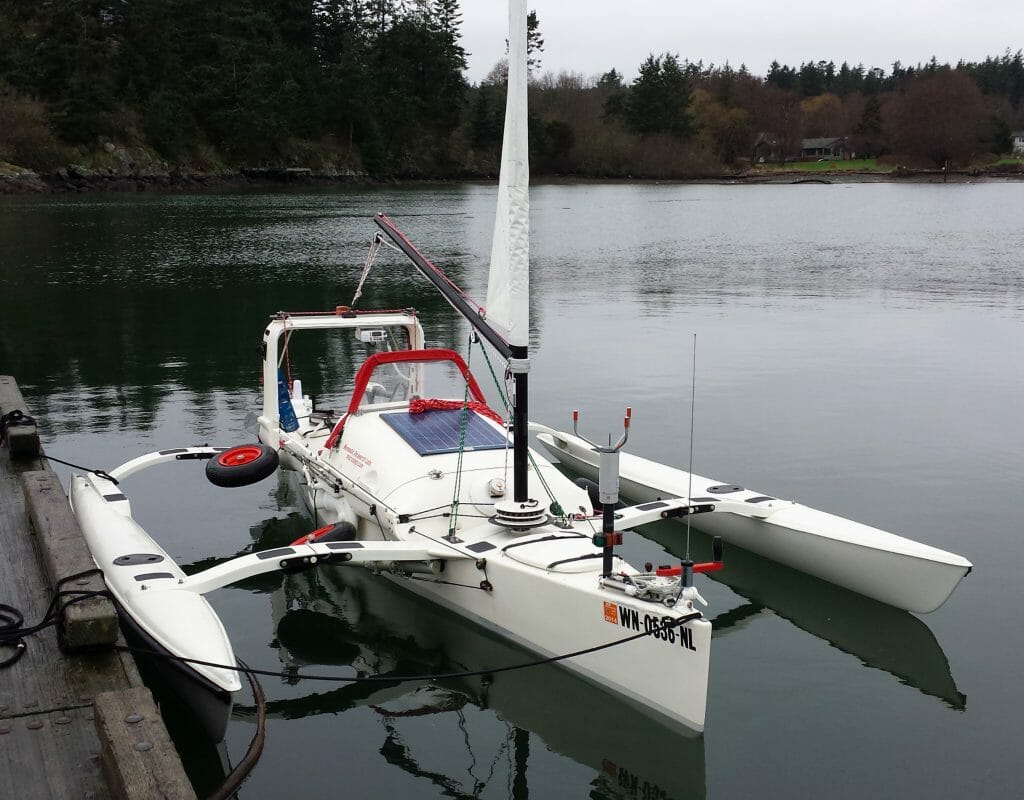
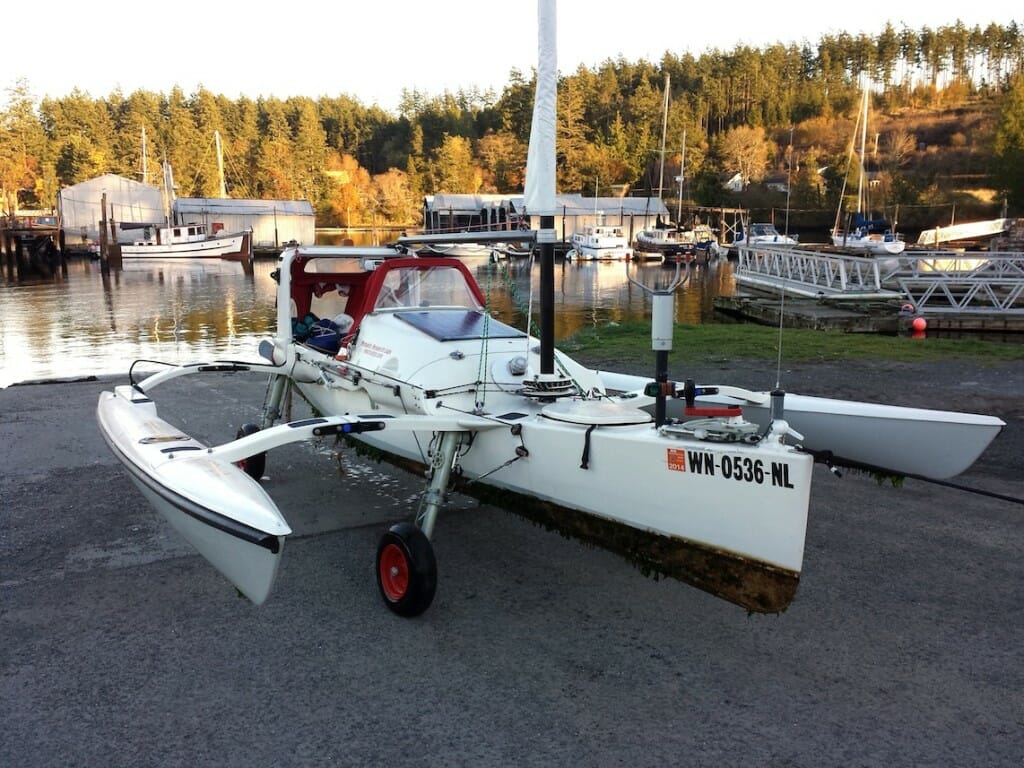
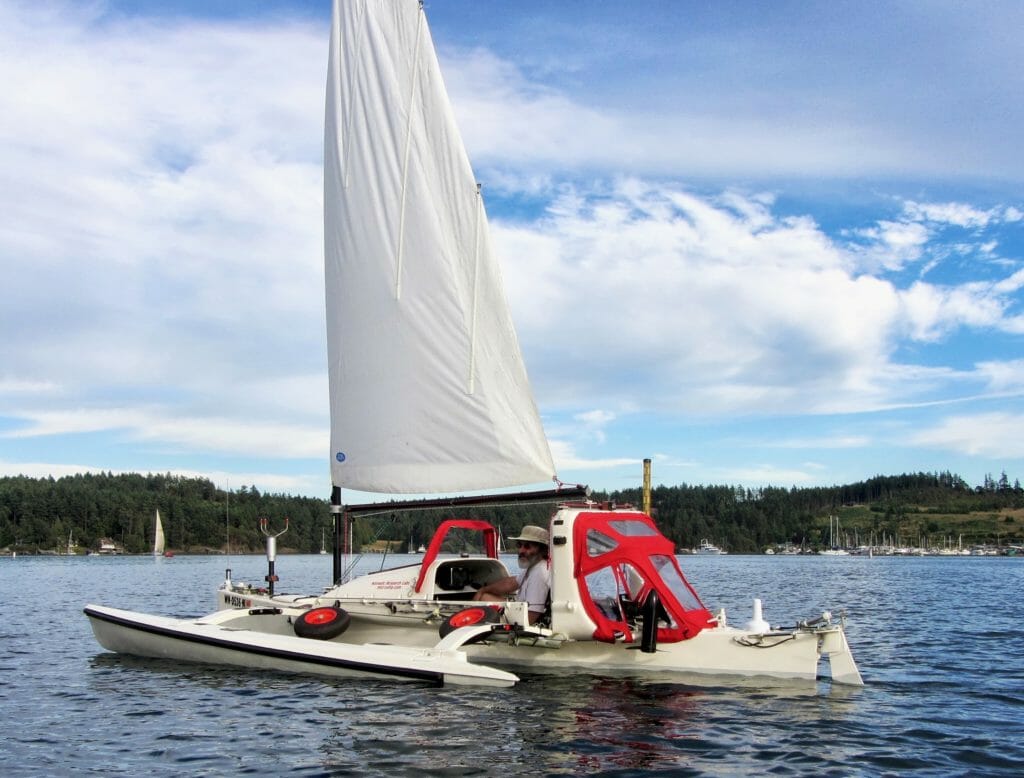

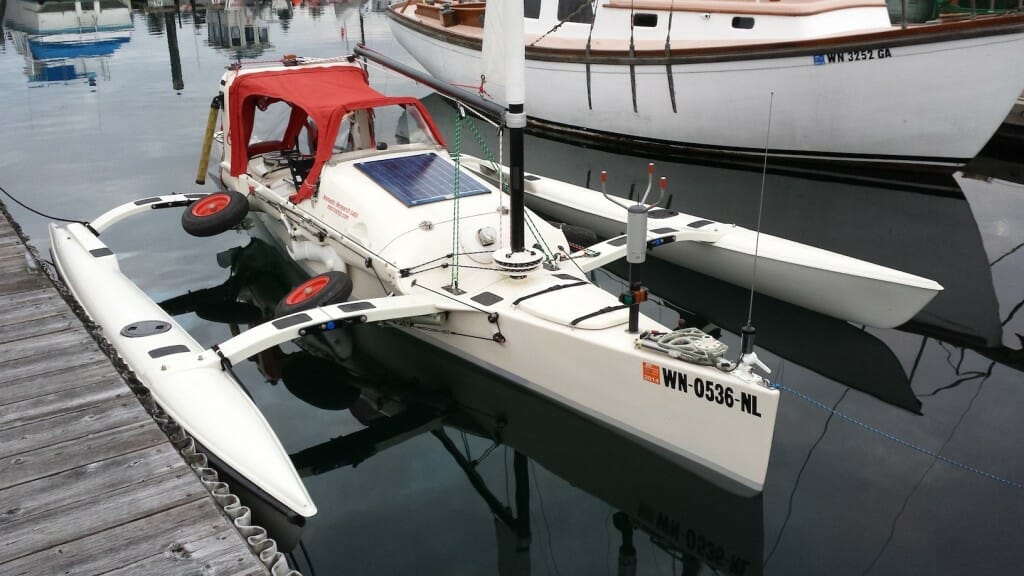

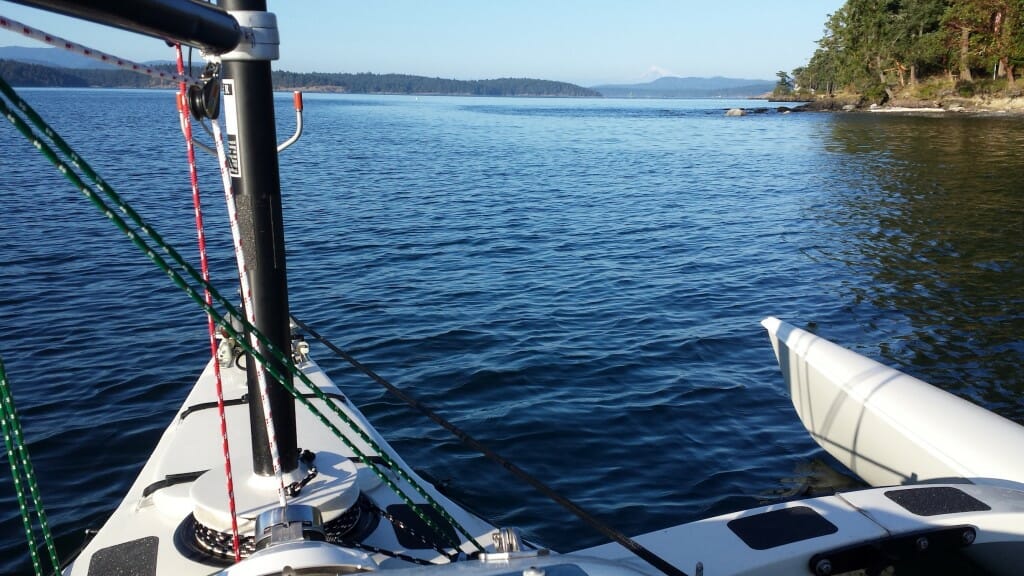
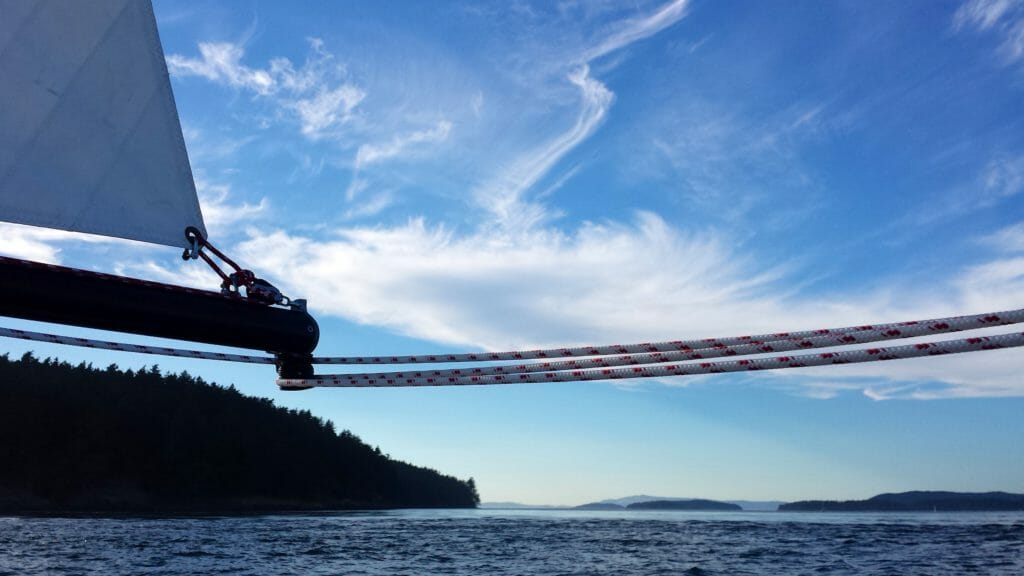
You must be logged in to post a comment.